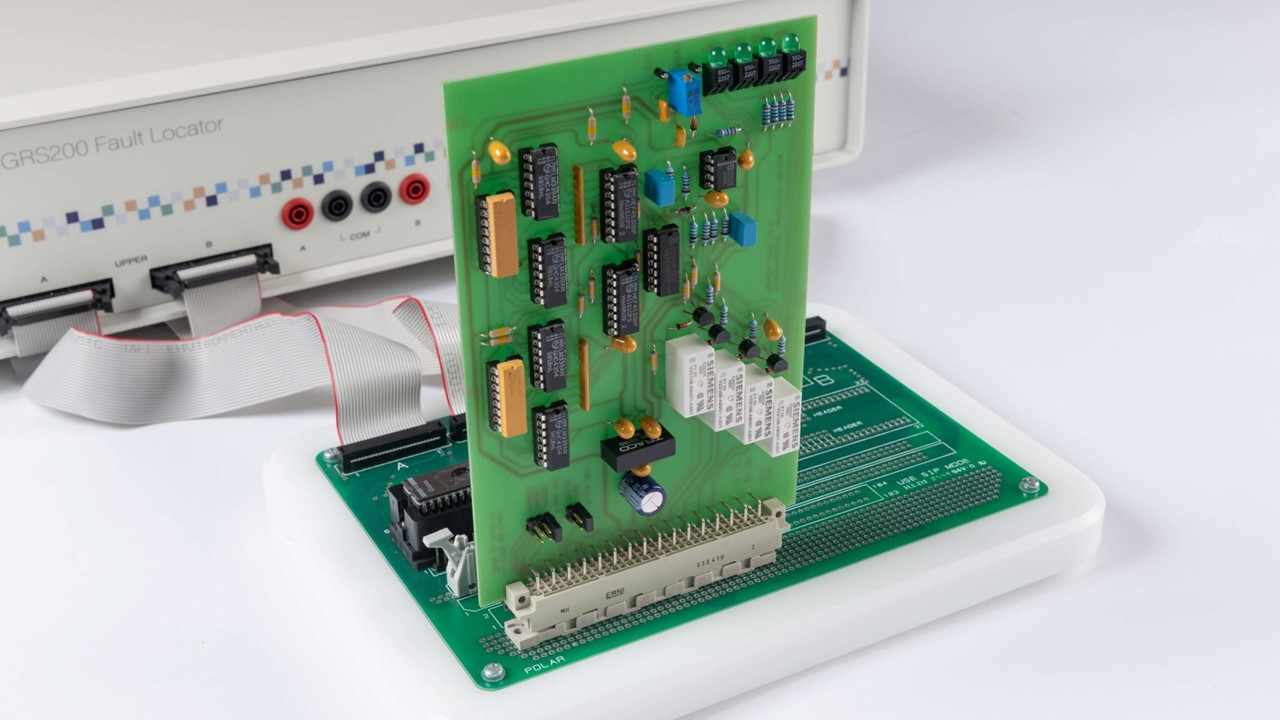At this year’s electronica 2024, Polar Instruments will showcase two test systems for electronics manufacturing and assembly repair, as well as a short circuit locator.
The test systems for electronics manufacturing and repair include the GRS 550 and the GRS 200. The GRS 500 has already established itself in the electronics industry due to its high fault coverage, cost-effectiveness, and ease of use. This system is designed as a repair test system, assisting in the repair of assemblies with difficult-to-detect faults, thus preventing them from being scrapped. The system was specifically developed for applications in prototyping, new product launches, and small series production that are unsuitable for conventional ATEs. The GRS 550 also serves as an excellent complement to traditional adapter-based test systems. “If you specialize in the production of prototypes or small quantity production, the GRS is the ideal solution for maximizing production yield,” explains Hermann Reischer, Managing Director of Polar Instruments GmbH.
The GRS 200 fault diagnosis system is based on passive analogue signature analysis and compares a known good assembly with the test unit. This allows for the rapid localization of typical faults in electronics production as well as in service and repair, without the need for circuit knowledge. The system consists of analogue signature hardware and powerful software featuring live signature analysis, program mode, CAD data visualization, schematic integration, assembly photos, repair reports, and optional connection to a digital multimeter. Furthermore, the GRS 200 imports CAD data from over 20 different formats, including GenCAD, Hyperlynx, IPC-2581, and ODB++, making it ideal for repair use. Circuit nets can be graphically highlighted, and the associated components can be displayed.
The short circuit locator is the Toneohm 950. Short circuits or components that excessively load the power supply account for a significant portion of faults in manufacturing and repair. While automatic test systems or conventional fault detection techniques can identify a short circuit, they cannot locate it precisely. The Toneohm 950 addresses this challenge using the innovative Vectored Plane Stimulus (VPS) technique. This allows the device to quickly and accurately pinpoint the location of the short circuit. “From the user’s perspective, it couldn’t be simpler; they just need to follow the directional arrows on the front panel of the device, which guide them to the fault location,” explains Reischer.
Polar Instruments will showcase its products at electronica in Munich from November 12 to 15 at booth A3.128.
To learn more, visit www.polarinstruments.eu.










